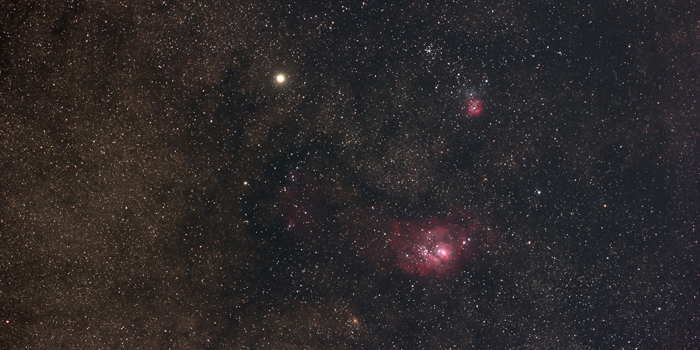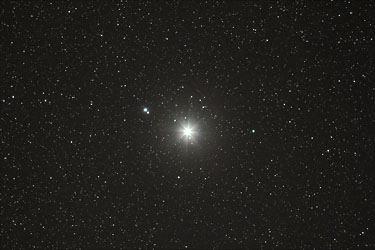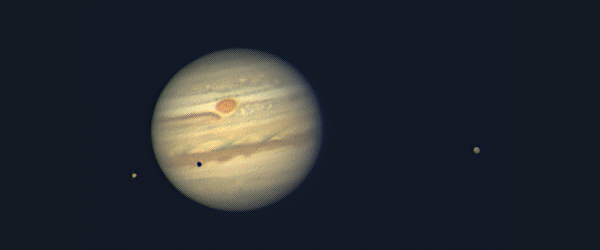|
| |
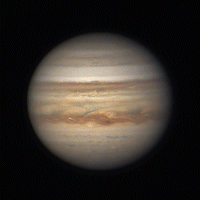 |
Special Projects - "all nine", a
planetary parade
In the
Namibian winter of 2018 (July, August) it was practically possible to observe
all 8 planets (+ Pluto and the bright planetoid Vesta) in one night.
Here now pictures of the outer
planets and the bright planetoid Vesta.
« Jupiter on
11.09.2018 Back to Special
Projects » |
|
 |
|
|
|
|
|
| The picture
above shows the planet Saturn in the vicinity of the field stars together with
Messier 8, 20 and 21. Taken on 15.09.2018, 6 x 120 seconds at 800 ASA.
Click to load a large image. |
|
|
|
|
 |
VESTA
The
planetoid Vesta (4), 7.2 mag, taken on 14.09.2018. 6 x 120 seconds with 200mm
telescope lens. Additionally the picture shows the planetoids Adorea (268),
13.9 mag and Lilaea (213), 13.2 mag. Top left in the picture the planet
Saturn.
Click to load a large image.
Click here to load a large image with
object labeling.
Below are three animations of the first and last images of the
series. |
|
 |
 |
 |
| 4
Vesta - 7m2 |
213
Adorea - 13m9 |
213
Lilaea - 13m2 |
|
| |
| |
|
|
|
The
following pictures and animations were taken with a Celestron 14 and a 17 inch
Planewave astrograph. The used Video modules were a ZWO ASI 224, 290 and a
Celestron SkyRis 445 Mono. The focal lengths were partially extended with a
Baader Q-Turett Barlow element. A Baader IR pass filter was used for all
monochrome images. The quality of the images varies greatly with the local
seeing conditions during the acquisition of the raw
avi-files.
|
|
|
| The
picture above left shows the planet Jupiter in the the star field, taken on
August 10, 2018. The picture can be enlarged by clicking
on it. Right: Jupiter with the big red spot, the moons Io (left),
Ganymed and the shadow of Io on Jupiter, taken with C 14, focal. |
|
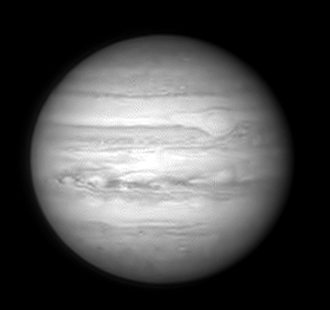 |
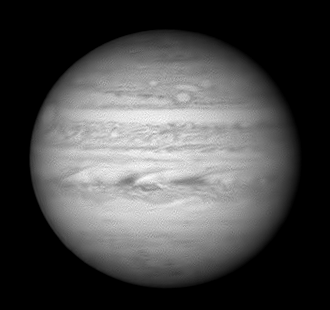 |
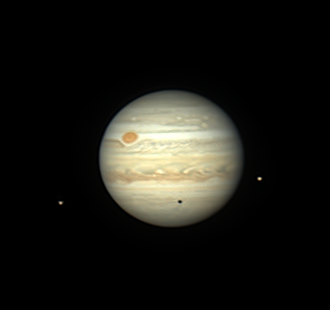 |
| Jupiter on 4. Juli (C 14) |
Jupiter on 11. Juli (C 14) |
Jupiter, Io + Ganymed on 26. Juli (PlaneWave) |
|
|
 |
| Jupiter
with the four Galilean moons. From left to right: Ganymed, Io, Europa and
Kallisto. Picture taken on August 15, 2018 (18:00 UT). Rohavi taken with the 6"
Zeiss APQ at 1200mm focal length. SkyRis video module and Baader IR pass
filter. |
|
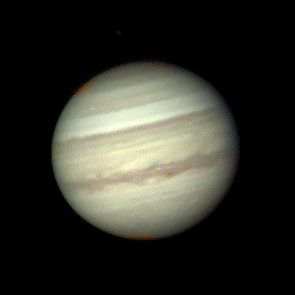 |
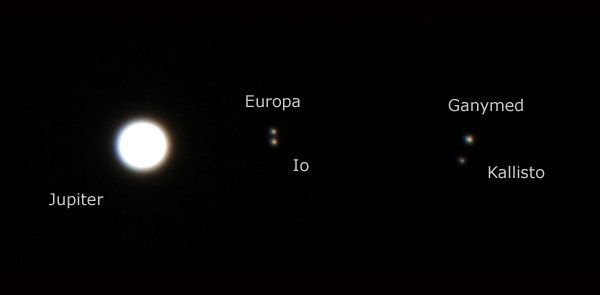 |
| Jupiter on 13. August (C 14) |
Rare moon constellation on 17. September 2018. DSLR
with Zeiss APQ |
|
|
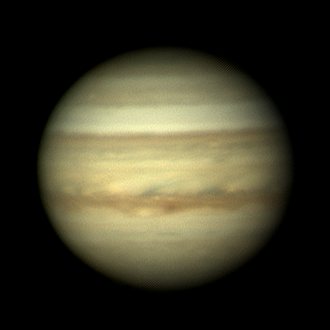 |
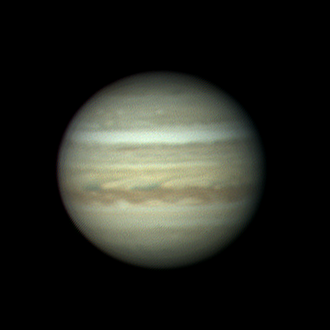 |
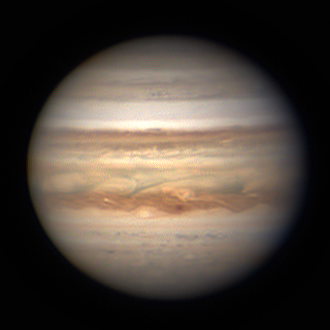 |
| Jupiter on 13. August (C 14) |
Jupiter on 24. August (PlaneWave) |
Jupiter on 11. September (C 14) |
|
|
The last
picture from September 11th shows a small rotation animation by clicking on it.
The time interval is about 15 minutes. The image resolution is approx. 0.5 arc
seconds.
|
|
|
|
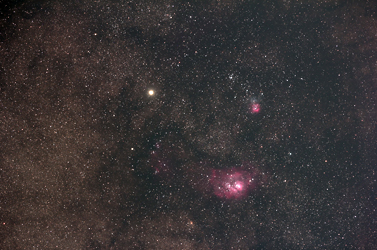 |
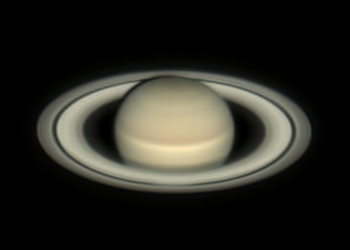 |
SATURN
« « The picture on the left shows
Saturn with fixed stars, together with Messier 8, 20 and 21, taken on 15
September with a 200mm telescope lens (6 x 120 sec., 800 ASA). Click to load a
large image. Click to load a large image.
Click here to load a large image with
object labeling.
« Saturn
am 28. Juli, aufgenommen mitSaturn on 28 July, taken with a ZWO ASI 224 and the
17" PlaneWave astrograph. |
|
|
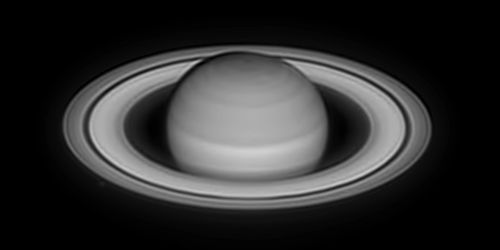 |
« The picture on the left shows the best
picture of the planet Saturn, which we have imaged since 2013. Taken on 28 July
with the 17" PlaneWave of a ZWO ASI 290 and Baader IR passport filter. The
focal length was extended by a factor of 2.2 with a Baader Q-Turett Barlow
lens.
The picture shows a dark narrow line in the ring system on the
left and right. Here the Encke gap in the Saturn ring becomes partly
visible.
For a telescope with only
17" aperture a "small sensation", because the width of the gap is just about
300 kilometres according to measurements of Voyager space probe images. These
300 kilometres roughly correspond to only 0.05 arc seconds. |
|
| |
|
|
|
The three
outer planets were only imaged with a telephoto lens. Uranus and Neptune stood
in a starless field, Pluto in a rich star field in the constellation
Sagittarius. Each 5 x 120 seconds exposed with a 200mm (f/4) telephoto lens at
ASA 800. All three images can be enlarged by clicking, the images are labeled
with the brightest field stars. Unfortunately, Pluto is not clearly
identifiable at this magnification. While the mages were taken, the moonlight
was still disturbing and causes the blue sky background.
On this website we show pictures
of Pluto, taken in 2015 at 24 hour intervals with a telescope of only 50mm
aperture. |
|
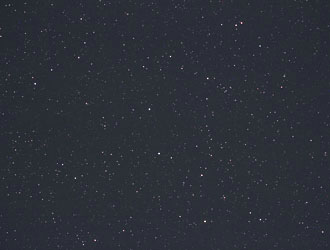 |
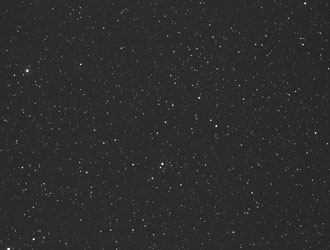 |
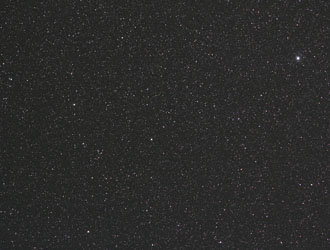 |
Uranus in the star field,
taken on
17.09.2018 |
Neptun in the star field,
taken on
15.09.2018 |
Pluto in the star field,
taken on
15.09.2018 |
|
|
|
|
|
|
|
| All Images and all Content are © by Wolfgang
Paech, Franz Hofmann + Dirk Lucius |


